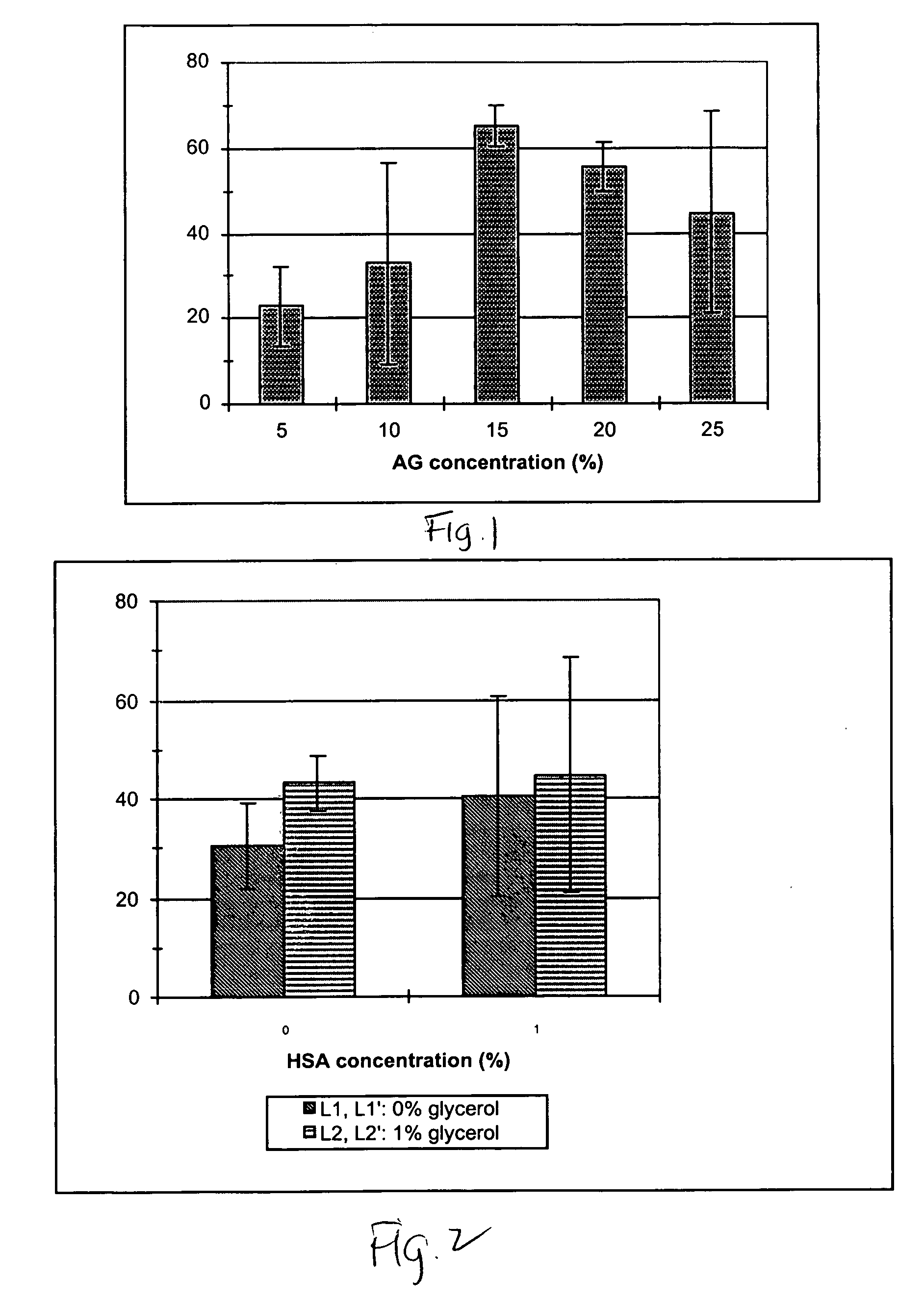Compositions and methods for cryopreservation of peripheral blood lymphocytes
a peripheral blood lymphocyte and cryopreservation technology, applied in the field of compositions and methods for cryopreservation of peripheral blood lymphocytes, can solve the problems of increased cell loss risk from osmotic stress, lower permeability of glycol, and high risk of dmso-associated toxicity in cryopreservation, and achieve high survival rate and protect somatic cell viability properties
- Summary
- Abstract
- Description
- Claims
- Application Information
AI Technical Summary
Benefits of technology
Problems solved by technology
Method used
Image
Examples
example 1
Methods
Isolation of Peripheral Blood Mononuclear Cells
[0085]Whole blood units (approximately 450 ml, with heparin anticoagulant) were obtained from healthy donors through standard venipuncture. Venipuncture was performed by the staff of the University of Minnesota Hospital Blood Bank Donor Center, with informed consent from all donors. The entire unit of blood was centrifuged at 4500 g for 4 minutes at room temperature. A buffy coat was prepared by extracting (and discarding) the plasma, then collecting approximately 50 ml from the top of the pelleted cells. The buffy coat was diluted with an equal volume of Dulbecco's Phosphate Buffered Saline (PBS) (Celox Laboratories Inc., St. Paul, Minn.).
[0086]Mononuclear cells (MNCs) were isolated from the samples using density gradient purification. Briefly, twenty ml of Histopaque-1077 (Sigma Chemical Co., St. Louis, Mo.) was added to each of four 50 ml centrifuge tubes. A 25 ml aliquot of diluted buffy coat was carefully overlaid. The tubes...
example 2
Methods
Cells and Pre-Freeze Processing Techniques
[0109]All freezing studies were performed using umbilical cord blood obtained from normal donors with informed consent and approval from the local Institutional Review Board. In order to remove contaminating erythrocytes as well as autologous plasma from the sample to be frozen, the product was purified using a density gradient separation technique. Briefly, 5 ml of Histopaque (Sigma, St. Louis, Mo.) was added to a 15 ml conical tube. The product was diluted in a 1:5 ratio with phosphate buffered saline solution and layered over the Histopaque. The tubes containing the apheresis product and Histopaque were spun at 500 g for 30–45 minutes. The band of mononuclear cells at the liquid—liquid interface was removed and used for the subsequent freezing experiments after one step wash. The resulting mononuclear cells were resuspended in the cryopreservation solution of interest and placed in either a freezing vial (Cryovial, Nunc, Napiervill...
PUM
| Property | Measurement | Unit |
|---|---|---|
| temperatures | aaaaa | aaaaa |
| cell diameter | aaaaa | aaaaa |
| temperature | aaaaa | aaaaa |
Abstract
Description
Claims
Application Information
 Login to View More
Login to View More - R&D
- Intellectual Property
- Life Sciences
- Materials
- Tech Scout
- Unparalleled Data Quality
- Higher Quality Content
- 60% Fewer Hallucinations
Browse by: Latest US Patents, China's latest patents, Technical Efficacy Thesaurus, Application Domain, Technology Topic, Popular Technical Reports.
© 2025 PatSnap. All rights reserved.Legal|Privacy policy|Modern Slavery Act Transparency Statement|Sitemap|About US| Contact US: help@patsnap.com



